Vauxhall Insignia GSi Sports Tourer review – exploring the Alps in a fast diesel estate
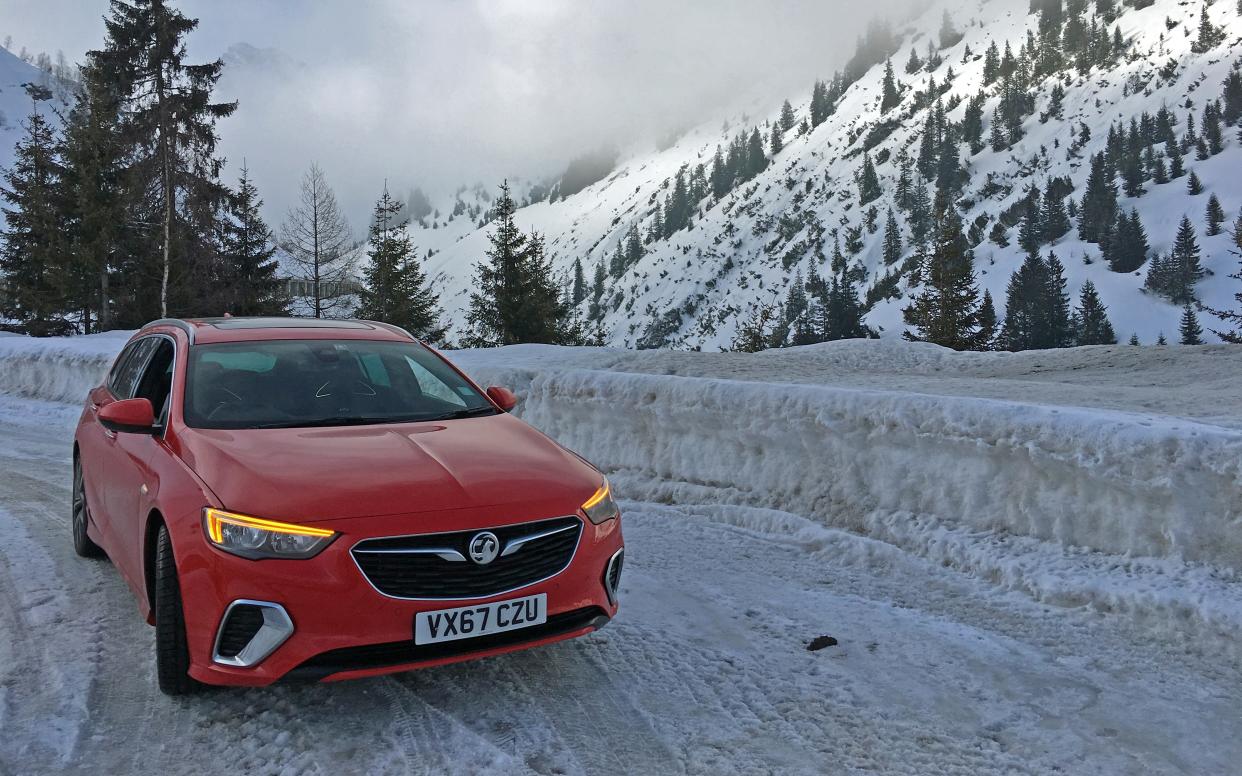
I’ve been trying to find the perfect grand tourer for several years now, and have so far reached two conclusions. Firstly, nothing that bears the letters ‘GT’ on its bootlid is a particularly good at the job. Secondly, it’s clearly a very difficult product to get right.
A grand tourer – that is to say, a car suitable for long-distance touring – must be simultaneously an engaging machine to drive as well as a practical load-lugger. It has to be comfy enough for a 1,000-mile trans-continental mission, and sporty enough for spirited drives in twisty mountain passes. It must carry luggage, but not too much weight; it must be fast, but not thirsty.
In a sense, then, a grand tourer is a car of contradictions. It is unfocused by design, a nebulous coming-together of competencies optimised for the wide-ranging tasks of long-distance road travel. The Bentley Continental GT comes somewhat close, as does the Mercedes-AMG GT, but beyond that I can’t think of a single car actually referred to as a ‘GT’ that performs adequately as a grand tourer.
Which is why I’m looking elsewhere. Towards the end of 2017 I took the Skoda Octavia VRS diesel estate to Riga and back, and was immensely surprised by how much I liked it. Fast oilburning wagons lend themselves to big trips so I thought I’d try another one: the Insignia GSi Sports Tourer, a mildy souped-up version of Vauxhall’s everyday estate car.

The key word to bear in mind here is ‘mildly’. Apart from the engine power, which leaps from 168bhp to 207bhp thanks to a second turbocharger, most of the tinkering has been fairly low-key. It rides a centimeter lower than other Insignias, with stiffer spring rates and marginally firmed-up handling, which is barely perceptible to the untrained eye. Tech like the torque vectoring all-wheel-drive and ‘FlexRide’ drive mode selection can be found in cheaper cars within the range but Vauxhall is keen to point out the Michelin Pilot Sport 4 S tyres, which are very sporty and are unique to the GSi.
As such, I received a friendly but slightly aggrieved message from Luton when I said that I wanted to take the GSi to Austria in February and would therefore need winter tyres. The workshop was happy to fit them but wanted to make clear that the car was optimised for the aforementioned Michelins, and that the finely-tuned handling and refinement of the ‘Sig could be compromised by cold-weather rubber.
The Insignia and its four Pirelli Sottozero IIs certainly generates a lot of tyre noise on the M20, admittedly one of the noisiest roads in the country but still broadly comparable with some of the surfaces found further afield. At this point the journey seems a tad daunting; I’m only ten miles in and I’m already picking holes in the car. Should I have taken something leggier? Would I be happier in a proper performance model? And why am I nearly at Folkestone with anything less than eight cylinders?
Why am I nearly at Folkestone with anything less than eight cylinders?
Nowhere is Europe’s infatuation with the SUV more apparent than on Le Shuttle which, having been designed before cars became so bloated, is full of oversized soft-roaders being inexpertly threaded down the half-kilometre of yellow-lit sarcophagus. I’m following one such beast, its tyres squeaking against the low metal kerb while a queue develops behind. There are very few situations in which a large, high-sided vehicle is better than an estate car, and this is not one of them.
The Insignia’s motorway prowess is obvious even in sportified GSi form. It eats long distance miles just like the standard car, while its upgraded steering and overall poise hints that it would like to slip off the autoroute and onto the sweeping roads of Normandy. We thunder down the A26 to Reims before heading East, reaching the border at nightfall.
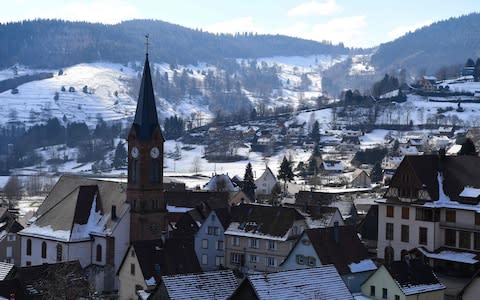
It’s hard to quantify refinement, but one criterion I borrowed from a conversation at the Rolls-Royce factory is as follows: a grand tourer must be able to deliver its occupants to an address 1,000 miles away, without them requiring a shower before dinner. Our route from London to Strasbourg has been around half of that but the Insignia has met expectations; I’ve driven cars worth ten times as much as this diesel estate over very similar distances, and felt wretched on arrival.
One of the most profoundly enjoyable things about driving, especially compared to flying, is the speed with which landscapes and cultures can change. We wake up in an unprepossessing suburb of Strasbourg, speaking and eating French, and within ten minutes we’re buying diesel in German. And a few minutes after that we’re on the German autobahn, the only place on the planet where a car’s top speed matters.
A post shared by Wiseman (@ed.wiseman) on Feb 24, 2018 at 3:02am PST
A claimed vMax of 145mph leaves the diesel GSi estate a little short of the German big boys, but it seems to be able to hold 130mph without any drama. The steering at this speed does start to crumble a little bit, offering not quite enough resistance to properly inspire confidence, but the issue is more with inexplicit feedback than an outright lack of communication. I’d be happy to do a sustained 100mph in this car but I'm nevertheless glad to come off the autobahn and onto quieter, slower roads.
The steering at this speed does start to crumble a little bit, offering not quite enough resistance to properly inspire confidence
We draw alongside Lake Constance, a lake on the Rhine with shorelines in Germany, Austria and Switzerland. The city of Konstanz is barely visible through the wintry cloud but on both sides of the road we can see acres upon acres of vines – we’re driving through Baden and into Württemberg, two distinct wine-growing regions and the southernmost vineyards in Germany. It’s a beautiful place even under gloomy skies.
The Austrian border approached and with it looms a dramatic Alpine horizon. The scale of this mountain range is hard to fathom until you’ve been at the foot of it, in a car, with hundreds of miles to go; it spans from Monte Carlo to Vienna, covering 77,000 square miles of Europe with some of the most inhospitable geography in the world – and some of the very best roads.

We plot a meandering route to Innsbruck, our nominal destination for this leg. The Insignia has been a wholly unobtrusive companion until now but it feels only right to test it in the sinewy Alpine foothills where the snow lies thick, vast drifts engulfing whole trees and enormous boulders. The mountains smell fresh like nothing else, their calm air cold and pure.
By this point we’re somewhat ragging it. It’s an extremely well-adjusted car given its size, format and specification; the torque vectoring four-wheel-drive system does deliver more stability and control in the corners, all while hauling an estate-load of space up a mountainside. I’m not convinced I’d be as impressed with the Insignia on a dry day in England, but up here freezing conditions, it feels like quite a special car.
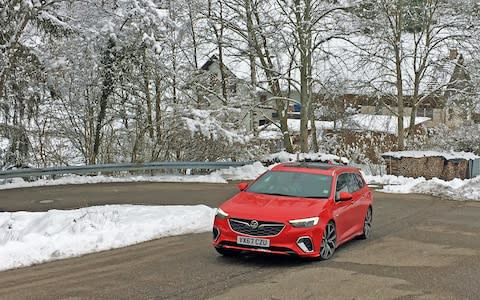
Heated seats and a heated steering wheel are more welcome than ever when the temperature dips below zero. The Insignia’s cabin is a very nice place to sit and, though it falls far short of luxury, it offers everything you need for a long trip – warm bums all round, enough USB charging points to keep everyone happy and a surfeit of cubby holes in which to lose things. By the time we park up for the night we’ve covered over a thousand miles since leaving London, most of them at speed, and I think I’m happier than I’ve ever been under similar conditions.
What's nice about cars like the Insignia (and the Octavia VRS, and the Leon Cupra) in relation to the more conventional grand tourers is that nobody notices or cares that we're here. It's just another Opel estate with foreign number plates. What's more, we've got here on about two tanks of diesel, meaning we've probably only spent ten minutes stopped at fuel stations. I did a similar trip in a Conti a few years back and found myself filling it every couple of hours – extremely frustrating on a long journey, and one of my main grievances with the GT old guard.
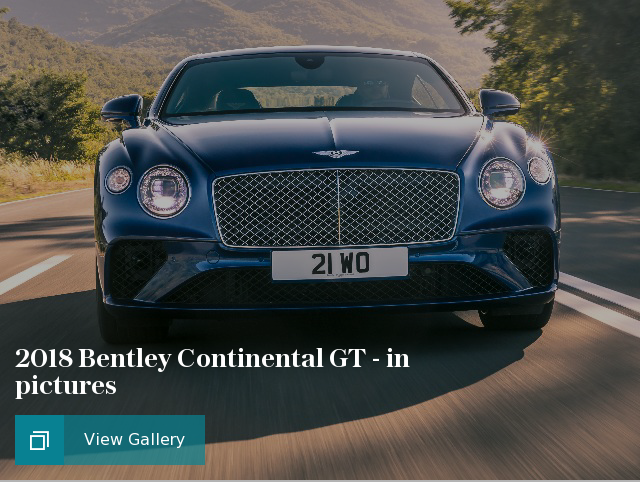
Innsbruck is an extremely civilised city. Quiet, clean and beautiful, it’s surrounded on all sides by jagged peaks. It’s strange to be able to see pistes from the city centre of such a large town but they’re clearly visible the window of our hotel and the picturesque Maria-Theresien-Straße below. We dive into the city’s silent alleys, find a bar, and then a slightly better bar, before retiring for the night.
After a traditional Austrian breakfast that stretches the word ‘salad’ to breaking point we clamber back in to the Insignia. It’s about an hour from Innsbruck to Kitzbuhel, which is where I’m scheduled to have dinner, so we plan a more scenic route that takes in parts of Italy and the Dolomites. Stocked up with Tyrolean energy drinks and some ancillary snacks we head south on the E45, crossing into Italy within the hour.
Nobody notices or cares that we're here. It's just another Opel estate with foreign number plates
This is one of the most spectacular routes in the E-road network, the UNECE-developed web of trans-continental motorways that spans the whole of Europe and beyond. It is, of course, signposted everywhere apart from the UK. The E45 is one of my favourites – it runs from the Norwegian city of Alta, one of the most northerly settlements on the planet, through half a dozen countries to the Sicilian coast in the south.
It leaves Austria at the Brenner Pass. This breathtaking valley is one of the few navigable affordances between Italy and its neighbour, and as such has been a fiercely contested piece of geography for centuries. Indeed, the border posts were only removed about 20 year ago, but we drive past the assembled lorries and plunge into the pastures below.
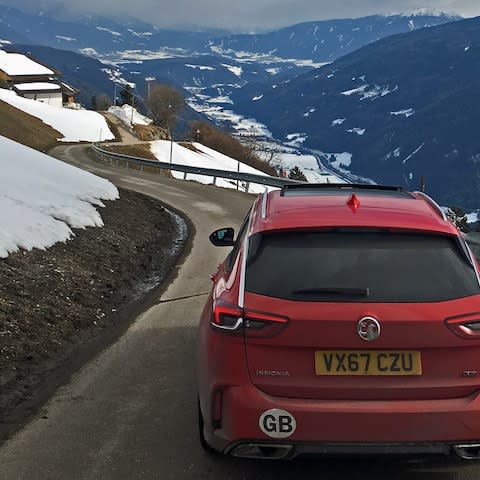
I’m keen to drive back into the mountains, into the seriously challenging roads in the north of Italy. Many of the most famous passes are closed for winter, but the Alps are full of tracks and roads that serve tiny hamlets and villages. Narrow and perilous, these delicate strips of tarmac are draped over the mountains like discarded linguine.
There are cars I’d rather be here with. The 718 springs to mind, as does the 4C. But the Insignia is gripping onto this hillside with uncommon tenacity, occasionally scrabbling in deeper, icier gravel but never losing composure. The sure-footedness of the GSi more than makes up for its lack of steering feel and the monotonous engine noise.
I wasn’t going to mention the exhaust note. It’s a diesel estate, for heaven’s sake, of course it’s not going to sound like a Ferrari. Besides, I absolutely despise the ‘augmented’ engine noises that manufacturers are starting to fit to cars. But up here, in the Alps, on a sunny day, you do begin to miss the burble, the crackling rat-at-at of a ‘proper’ engine bouncing off the mountains. The GSi’s diesel engine is simultaneously its best and worst feature.

Brunico is also called Bruneck. Like everywhere in the affluent South Tyrol region, it has both an Italian and a German name, and has clearly been influenced by both cultures; the petrol station is closed for lunch, but sells several types of Bavarian sausage. Most people here speak German but there are still clusters of people speaking in rare tongues – Ladin, Mòcheno, Cimbrian – sometimes surviving in groups just hundreds strong.
The Toblacher See, or Lago di Dobbiaco, is an extremely pleasant detour and an ideal lunch stop. We cross a langlauf track, navigate a narrow bridge and park up outside the lakeside restaurant, where we settle in and attempt to order food in an embarrassing mixture of Italian and German. An Italian tourist implores her Samoyed to “piano” on the frozen beach, which in a few months time will welcome sunbathers and swimmers.
Despite waking up in Innsbruck, barely an hour away from where I need to be in the evening, our scenic route (admittedly via lunch in Italy) has put us well behind schedule. We’re now late for dinner and face a mad dash over the Dolomites if we’re to reach Kitzbuhel in time for tea. It begins to snow almost as soon as we rejoin the main road, and darkness sets in.
A post shared by Wiseman (@ed.wiseman) on Feb 27, 2018 at 1:27pm PST
We’re at the source of the Drava river, which we follow east into Austria. It’s one of the many tributaries of the Danube and after we part ways with it at Lienz, it slithers through Slovenia, Croatia and into Hungary. We head in the opposite direction, into the snow.
The 5km Felbertauerntunnel offers brief respite but the weather is far worse at the other end, and the roads haven’t been cleared at all. Lorries are parked up on the steep slopes, unable to progress, and a tatty Polo laden with skis begins to falter. The Insignia GSi, with its all-wheel-drive powertrain and punchy winter tyres, is pretty much the perfect car for the job – far more stable than an SUV in these conditions, not to mention easier to control.
These final kilometres into Kitzbuhel represent the end of our outward leg. They’re challenging enough but would be downright unpleasant in anything I’d been daydreaming of earlier. A big car like a 911 would just be miserable, a smaller sports car like the 4C would have struggled, and probably broken down. The Insignia GSi is handling the situation with calm, collected competence, just as it did everything else I’ve thrown at it.
The Insignia GSi is better than an SUV in almost all conditions, and easier to control
The Insignia GSi isn’t the best at any one thing. There are cars that drive better, cars that go faster, cars that are better in bad weather and cars that are more spacious or practical inside. But I’m struggling to think of a better all-rounder, or anything that delivers this much outright ability in such an affordable, understated package.
Is the Vauxhall Insignia GSi the perfect grand tourer? No, of course it isn’t. I still haven’t found that yet. But I’ve just driven it thousands of miles across Europe, from Kentish motorways to French autoroutes, derestricted German autobahns to crooked mountain tracks, compacted snow to gravel path, and it hasn’t faltered once. It’s a real generalist, and that’s something very rare indeed.
Vauxhall Insignia GSi Sports Tourer – facts and specifications
Vauxhall Insignia GSi Sports Tourer BiTurbo diesel
Tested:1,956cc turbocharged four-cylinder diesel engine, eight-speed paddle-shift automatic, variable four-wheel-drive
Price/on sale: from £34,475/now
Power/torque: 207bhp @ 4,000rpm/354lb ft @ 1,500
Acceleration: 0-62mph in 7.4sec
Top speed: 144mph
Fuel economy: 39mpg (EU Combined)
CO2 emissions: 187g/km
Verdict: The Insignia GSi is one of the best fast diesel estates you can buy. Sure-footed and lively, it's one of a very small number of family cars that you might want to take on a week-long Alpine adventure. You can spec something similar for a few grand less but the GSi delivers a charmingly athletic compromise. It's a masterclass in versatility and one of the best all-rounders for less than £40,000.
Rating: Four stars out of five
For all the latest news, advice and reviews from Telegraph Cars, sign up to our weekly newsletter by entering your email here

 Yahoo News
Yahoo News 
